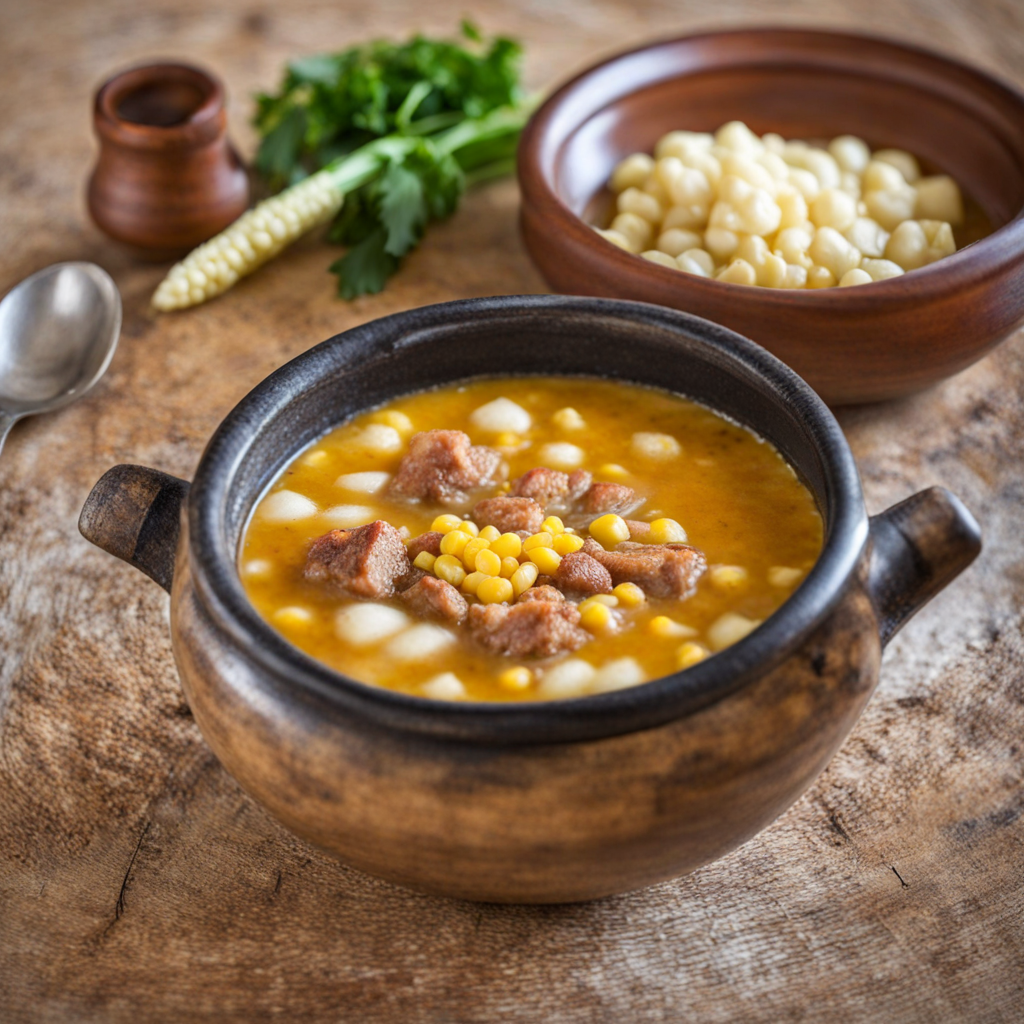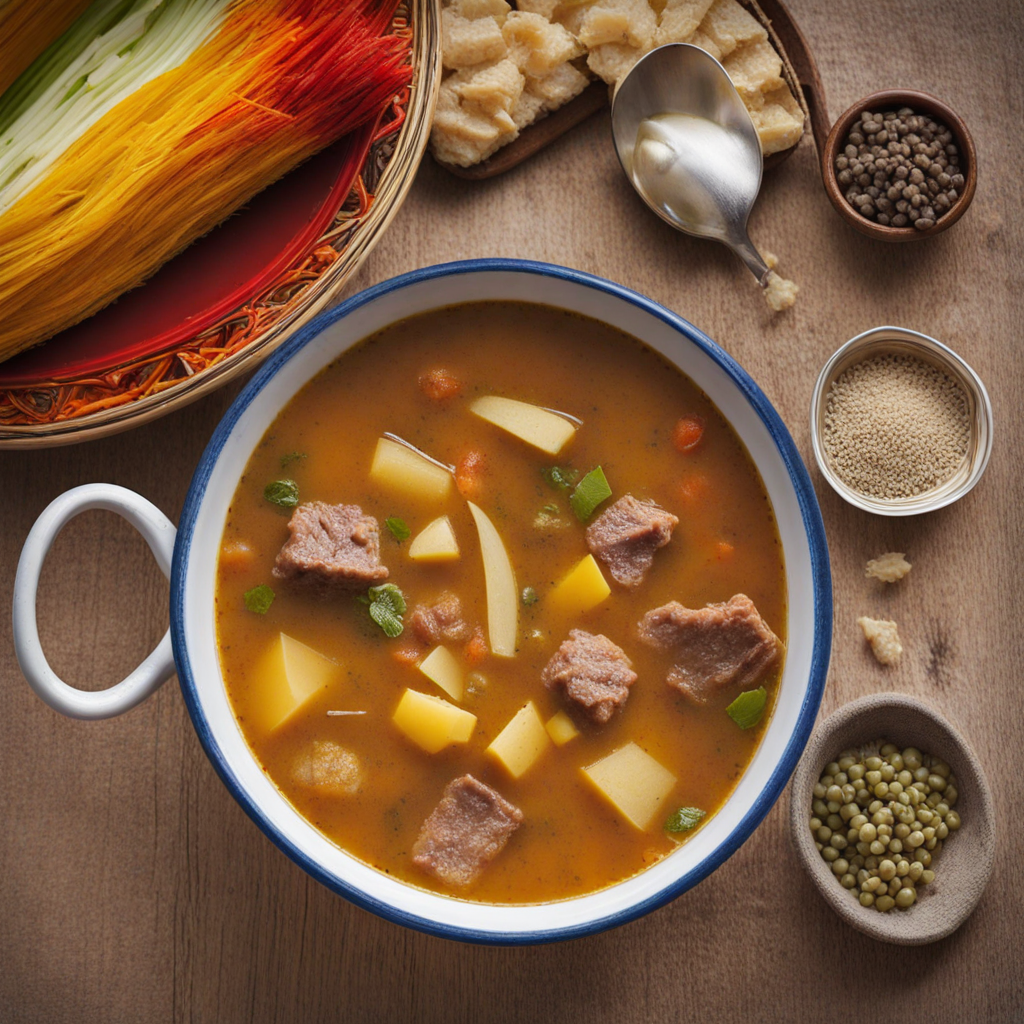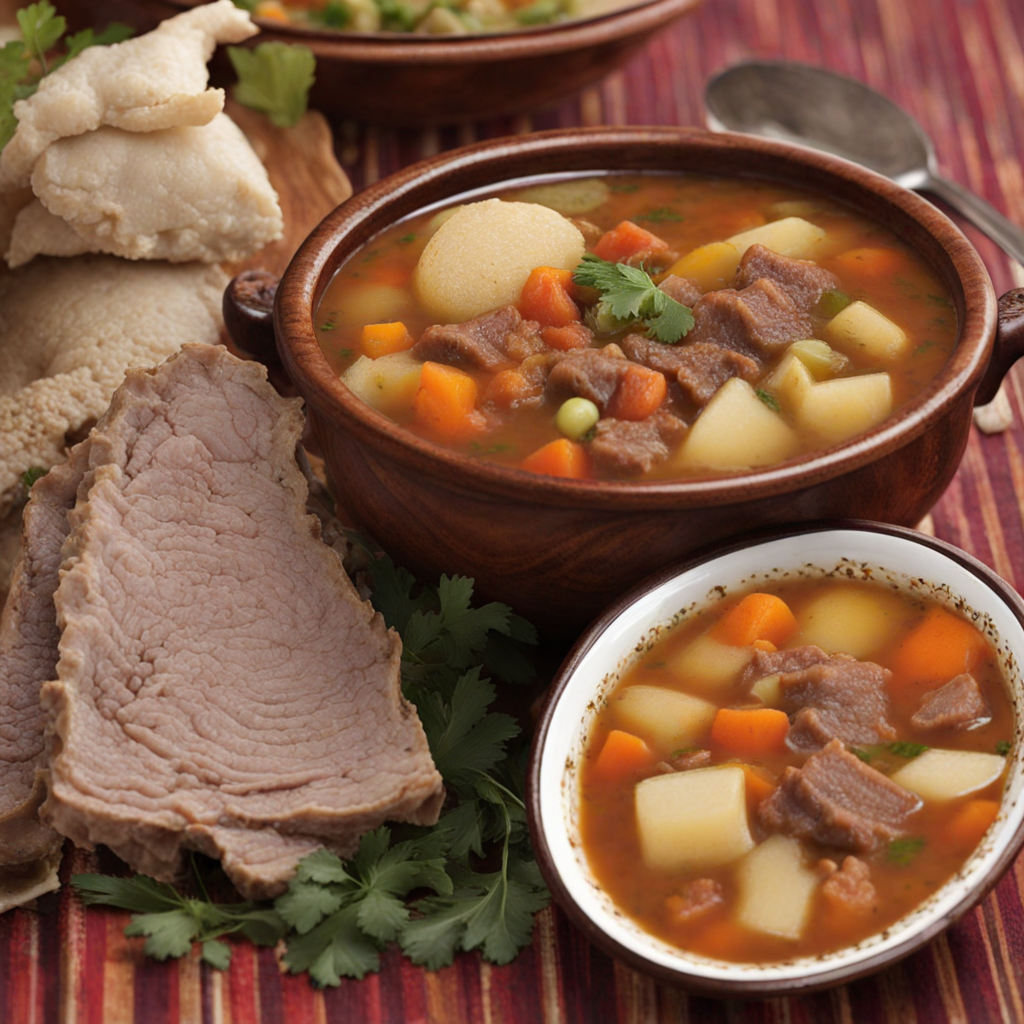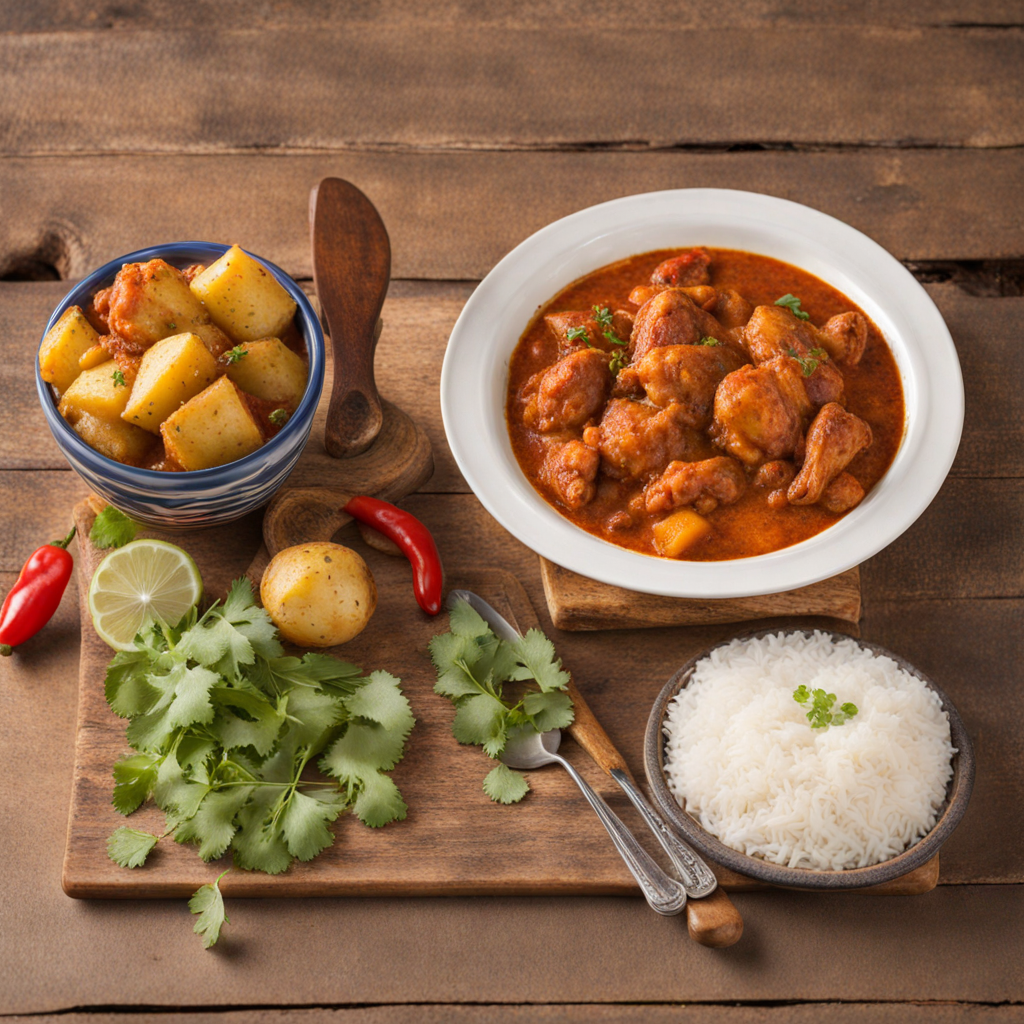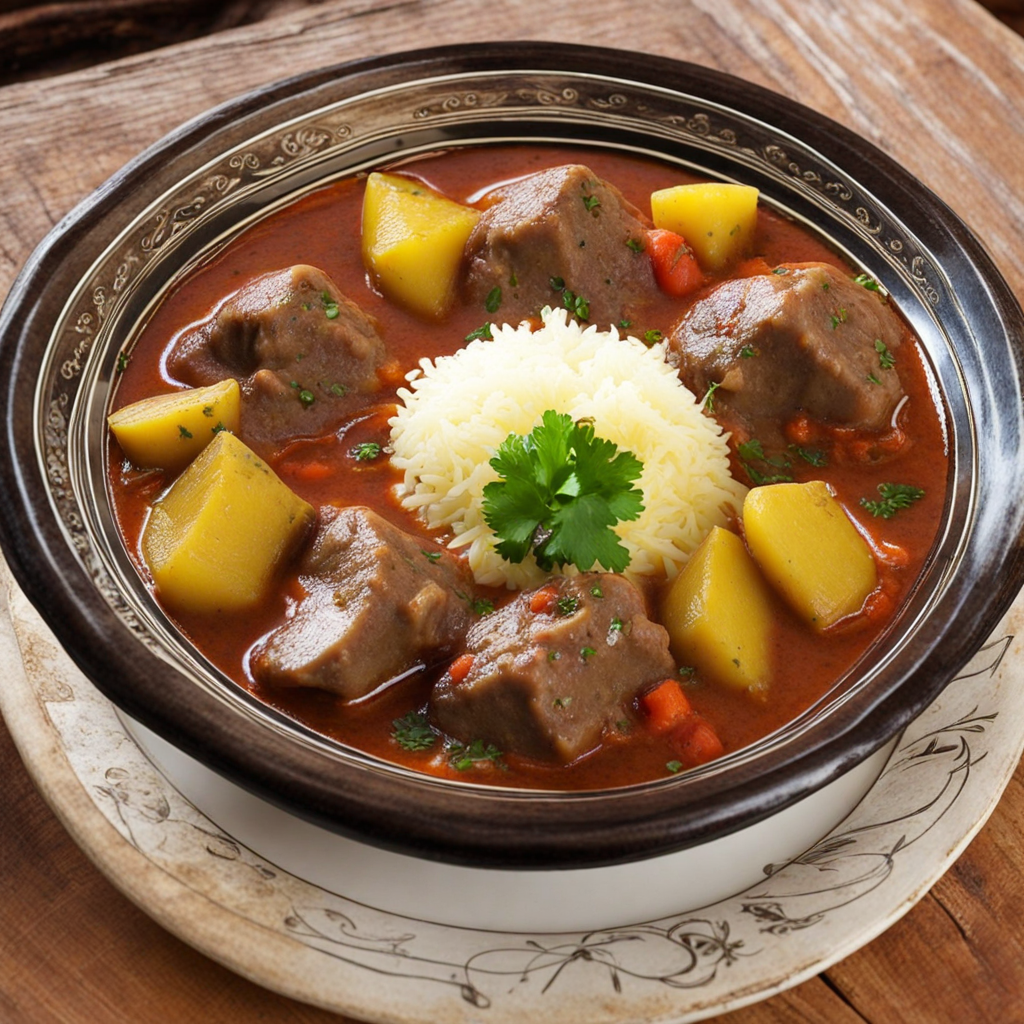Patasca
Patasca is a traditional Bolivian soup that embodies the essence of Andean cuisine, showcasing a rich blend of flavors and ingredients. This hearty dish is primarily made with hominy corn, which is corn that has been treated with an alkali in a process called nixtamalization, giving it a unique texture and flavor. The soup is often enriched with pieces of tender meat, typically beef or pork, that have been slow-cooked to enhance their tenderness and infuse the broth with deep, savory notes. The addition of spices like cumin and oregano further elevates the flavor profile, while fresh herbs like cilantro add a refreshing touch to the final presentation.
How It Became This Dish
Patasca: A Culinary Journey Through Bolivian Heritage #### Origins of Patasca Patasca is more than just a dish; it is a cultural cornerstone in Bolivia, steeped in history and tradition. To understand its roots, one must travel back to the pre-Columbian era when the indigenous peoples of the Andes developed a rich agricultural system. The Andean region is known for its diverse crops, including potatoes, corn, and various grains, which would later play a significant role in Bolivian cuisine. Patasca is believed to have originated with the Aymara and Quechua peoples, who inhabited the highlands of Bolivia. The dish primarily consists of hominy corn, which is corn that has been treated with an alkali in a process known as nixtamalization. This not only makes the corn more digestible but also enhances its nutritional value. The combination of hominy, meat—traditionally lamb or pork—and various spices creates a hearty stew that reflects the agricultural bounty of the region. The name "patasca" is thought to derive from the Aymara word "p'atasca," which refers to the thick consistency of the dish. Over the years, it has evolved into a staple food that showcases the culinary ingenuity of Bolivian indigenous cultures. #### Cultural Significance Patasca holds a significant place in Bolivian culture, particularly in the highland regions such as La Paz and Potosí. The dish is not just a source of sustenance; it is a symbol of community and tradition. Patasca is often prepared during communal gatherings, celebrations, and religious festivals, serving as a dish that brings people together. It is common to see Patasca served during the Andean New Year, known as "Inti Raymi," when families and communities celebrate the winter solstice. Moreover, Patasca is deeply embedded in the rituals and practices of local communities. It is often offered as a part of traditional offerings to Pachamama (Mother Earth), reflecting the indigenous belief in respecting nature and the cycles of life. The preparation of Patasca is frequently a communal activity, where family members gather to prepare the ingredients, cook the dish, and share stories, reinforcing social bonds within the community. #### Development Over Time As Bolivia underwent various social and political changes over centuries, so too did Patasca. The Spanish conquest in the 16th century introduced new ingredients and cooking techniques, which melded with indigenous traditions. The incorporation of spices such as cumin and garlic, along with the introduction of new meats, like beef and chicken, broadened the flavor profile of Patasca. In the 20th century, as urbanization took hold and people migrated from rural areas to cities for work, the way Patasca was prepared and consumed began to change. Urban families started to modify traditional recipes, adapting them to their new lifestyles while still honoring the essence of the dish. Convenience became a factor, leading to the use of pre-cooked or instant hominy corn, which allowed for quicker preparation times. Despite these changes, the heart of Patasca remained intact. It continued to be prepared in homes, markets, and street stalls, where vendors served it hot, often accompanied by a side of spicy salsa known as "llajwa." The dish became an emblem of Bolivian street food, accessible to all, irrespective of social status. #### Regional Variations Patasca varies significantly across different regions of Bolivia, reflecting local ingredients, customs, and tastes. In the highlands, where the climate is cooler and agriculture is predominantly pastoral, Patasca is usually made with lamb or pork and served with a rich broth, often thickened with the addition of potatoes or other tubers. In contrast, lowland variations might incorporate chicken or beef, utilizing the abundance of livestock in those areas. In some regions, Patasca may also include local vegetables such as chuño (dehydrated potatoes) or a variety of Andean grains, which adds depth and complexity to the dish. Some families have their unique secret ingredients, passed down through generations, that contribute to the distinctiveness of their Patasca. #### Modern Interpretations and Global Reach In recent years, as Bolivian cuisine has gained international attention, Patasca has found its way into the culinary repertoire of restaurants beyond Bolivia's borders. Chefs are inspired by its rich flavors and cultural significance, offering modern interpretations that introduce this traditional dish to new audiences. Contemporary versions of Patasca may include gourmet presentations, fusion elements, or even vegetarian adaptations that respect the spirit of the dish while catering to modern dietary preferences. However, at its core, these innovations continue to honor the essence of Patasca, a dish that tells the story of the land, its people, and their enduring traditions. #### Conclusion Patasca is much more than a mere dish; it embodies the historical, cultural, and social tapestry of Bolivia. From its origins in ancient Andean civilizations to its role in contemporary Bolivian society, Patasca reflects the resilience and adaptability of a culture that has thrived for centuries. It serves as a reminder of the importance of community, tradition, and the connection between food and identity. As the world becomes more interconnected, Patasca stands as a delicious symbol of Bolivia's rich culinary heritage, inviting all to partake in a dish that has nourished generations. Whether enjoyed in a bustling market or a family gathering, Patasca continues to warm hearts and bellies, preserving the stories of those who came before and forging new connections in the present.
You may like
Discover local flavors from Bolivia


